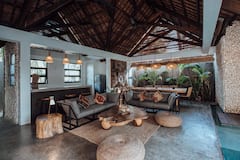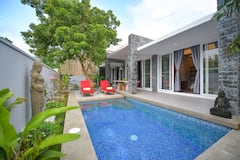Sometimes, while riding or driving a motorcycle in the Philippines, you see 10 others driving beside you or even 5 passengers in 1 motorcycle - yes, you read that right! This is a common sight to see in the Philippines, where entire families can incredibly fit on a single motorbike. Don’t let this startle you though, if you’re looking to motorbike around the Philippines, this article will bring to you a lot of interesting secrets about biking during all four seasons and some pro tips you should have to ensure safety.
Riding in the Philippines

There are many reasons as to why people in the Philippines choose to drive motorcycles instead of cars. Cars are in fact more comfortable and can seat more people… So why motorcycles? Firstly, this is because heavy traffic is an issue in the Philippines. The traffic and parking are humongously terrible in urban areas, making it much more convenient to travel by motorcycle instead, especially for running errands or simply for your commute to work. With the exception of the occasional heavy rains, weather isn’t a huge concern as the Philippines is a very hot country - it’s sunny 24/7 until the torrential monsoon season (June to October)!
Another reason for having so many motorcycles in the Philippines is that motorcycles are quite cheap - well, cheaper than cars that is! In addition to this, motorcycles are also cheaper to maintain as compared to cars. The price of regular gas here is only about 40 PHP (0.83 USD) per liter.
Due to the country’s three distinct seasons (cool, hot and wet season), there is no ‘perfect’ season to ride bikes. The Philippines is however a beautiful and vast country with thousands of islands you really should explore and tick off your bucket list!
Cool Season: Late November to Early February

During this season, the days and nights are quite cool being 40° to 50° F. In the daytime though, temperatures can be quite pleasant. It is generally cold at higher elevations like that of Tagaytay or Baguio in the island of Luzon. Because of obvious reasons, you will get chilled when riding a motorcycle, so insulated outerwear are recommended. During the cool season, there is almost no chance of rain.
Hot Season: Late February to May

Their daytime temperature highs reach approximately 90° F. While riding, you do not exactly feel the heat but once you stop and are in the sun, you do feel the scorching heat so you probably will want to wear a light cover-up or shell to block the sun. When you are not riding, stay in the shade. During this season, there is also a near zero chance of rain.
You might be interested in these Airbnbs!
Wet Season: June to October

It usually rains for short periods a day during the wet season. Rain is usually localized and moves around the region in an unpredictable manner so make sure to listen to the local weather news. It gets cloudy which blocks the heat of the sun resulting in low temperatures. However, this is the season when Southeast Asia is at its greenest and most lush so expect a nice view of nature.
In sum, they basically have a single season, and that is hot and humid. Although there will always be a chance of rain, and in the rainy season, it is usually a daily occurrence, it is still always best to have the perfect outfit - a riding suit, motorcycle gloves, motorcycle boots, and always bring your motorcycle GPS so as to not get lost. But never forget to look amazing, who says riders can’t be fashionable?
Getting around

It’s easy to get lost when the Philippines is known to be an archipelago of 7,107 islands - that’s a lot of islands to explore! So getting lost is indeed quite and highly possible. Without a motorcycle GPS, I would not have been able to know where to go and which roads to take. Although if all else fails, Filipinos are known to be very friendly so approaching them for directions will cause you no trouble - you might even make a friend or two along the way!
Luzon is the main island where the capital Manila and many attractions are located. Bikers go to Manila’s bay area on weekends when there’s less traffic, around the SM Mall of Asia complex. Many take the SLEX highway south to visit the cool highlands of Tagaytay; others ride north on the NLEX highway to visit the Subic Bay area and its many resorts. If you just wants to stay on land, you can bike south via the SLEX and coastal pavement to Lucena and the nearby old hot springs resort town of Vigan. A day’s ride further south will get you to Legaspi city of Mayon volcano fame, and there are nice winding roads along pineapple and coconut fields going to Daet city, which is slightly nearer.
Pro Tips

While riding in paradise might encourage you to relax and forget about safety, accidents do happen. Here are some tips that one should apply to ensure safety:
● Before riding in a foreign country (especially the Philippines wherein not all drivers follow road rules) make sure to be professionally trained in motorcycle riding.
● Secure your license to drive in the Philippines.
● NEVER drink and drive.
● Notice that not all Filipino riders use helmets. Thanks to city laws, they are now transitioning to the usage of helmets. So for your own safety, please use helmets that meet the DOT (Department of Transportation) standards.
● Wear protective clothing – this includes goggles or sun shades for eye protection, jacket, full- fingered gloves, long pants and over-the-ankle motorcycle boots.
● Make sure that your motorcycle clothing and gears are made of abrasion-resistant material, such as leather. Avoid loose, flailing clothing that could impair your vision.
● Wear colored garments may help other vehicles see you especially in the dark as some drivers (both car and motorcycle) drive ridiculously fast at night.
● Always keep your headlights on at all times.
● Proper maintenance and monitoring of your bike is of high importance. Observe proper lane positioning of your bike to further increase your visibility to drivers. Keeping a “space cushion” between your bike and other traffic should also be kept in mind.
● Avoid sharing a lane with a car since its driver may not expect you to be there or may not become aware of your presence. Most drivers look out for other bigger vehicles that they may fail to notice you instantly unless something has happened already.
● Ride according to your skill level. Never overestimate yourself.
Get on your bike and enjoy your ride!
That being said, travelling around the Philippines is going to be an amazing ride and to top that off, riding on a motorcycle in the Philippines will be twice as fun - It is indeed “more fun in the Philippines!”
History
Get Trip101 in your inbox
Unsubscribe in one click. See our Privacy Policy for more information on how we use your data






















Create an account to